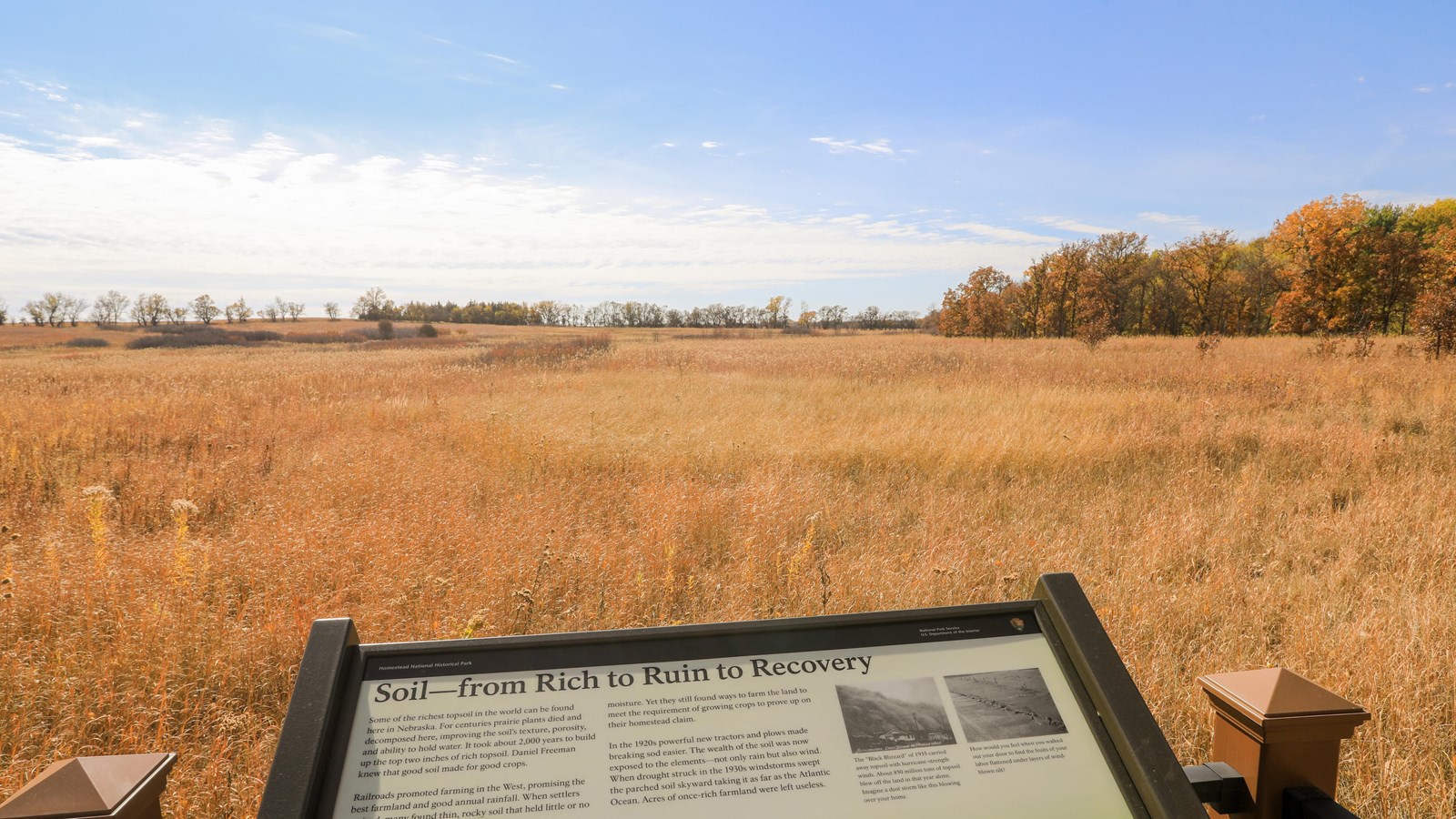Last updated: November 14, 2024
Place
Soil-from Rich to Ruin to Recovery, wayside exhibit

NPS/Robert Hartwig
Quick Facts
Location:
Homestead National Historical Park
Designation:
wayside exhibit
Amenities
2 listed
Historical/Interpretive Information/Exhibits, Information
Prairie grasses are known to have strong, deep, and well-integrated root systems that capture water and hold the soil in place.
When early homesteaders looked at the prairie, rather than seeing a rich biodiverse ecosystem, they often saw prairie grasses as something to remove so they could access the rich soil beneath them for agriculture.
Unfortunately, once the lands were plowed and the integrated prairie roots were gone, there was little holding the soil in place. In less than a century, this resulted in dust storms that often carried good topsoil far from its place of origin.
The grasses you see in front of you are restored tallgrass prairie.
When early homesteaders looked at the prairie, rather than seeing a rich biodiverse ecosystem, they often saw prairie grasses as something to remove so they could access the rich soil beneath them for agriculture.
Unfortunately, once the lands were plowed and the integrated prairie roots were gone, there was little holding the soil in place. In less than a century, this resulted in dust storms that often carried good topsoil far from its place of origin.
The grasses you see in front of you are restored tallgrass prairie.
